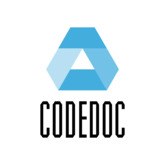As a web designer myself, I have to say that having all the above mentioned things is extremely important. Having the proper portfolio website (with proper header graphics and keywords) is essential as well. But sometimes, even the best designed website is useless unless you have one or many of these things. In this article, I’m going to list the things I consider to be absolutely necessary for a full-stack web developer.
A lot of times, it seems that designers are too focused on what the website looks like. If your site looks like it’s made by some junior high school student, then they probably don’t think that you’re a full stack web developer. And if your site looks like a high school student made it, then they probably don’t think you could be considered one either. So, what do we do? Let’s have a look at a few great examples below…
My favorite thing about these videos is the demonstrations. They always seem to make me feel like I’m right there in the same room as the person that is explaining it to me. This makes it extremely easy for me to visualize exactly what the person is talking about. And of course, having the ability to look at the real world application is a big plus as well. Most of these Full Stack Web Developer Portfolio Videos have an actual example of what their web development team does on a daily basis. So, it gives you a clear picture of what things would look like if you were the one making the decisions.
Okay, here are a couple of samples from the Full Stack Web Developer Portfolio that I absolutely love. The first video shows the designer at work. She clearly explains how she builds the various pages that go on her site, and she explains what it looks like when the pages are all finished. The video is focused on the creation of her blog site, but the visual examples in the video make it clear that this is just the beginning. The site looks like something that someone might actually put together in a couple of hours.
The next video is called “Building a Single Page Website: Part 1”. The video starts with the designer showing some of the most common mistakes that are made in building a website of any kind. As you may expect, the majority of the time is spent on the creation of just one page. The video clearly emphasizes that Tobias again focuses on the creation of just a single page, because that is the focus of his career.
The final video in the set is called “Building a Single Page Website: Part 2”. In this video, the designer shows a couple different aspects of building up a website. These include creating the index page, and then working through each individual web page to create content. You will also see how the layout of the site uses navigation, and then you’ll get into the more technical details of how the site uses CSS and HTML. This is really an excellent video that gives a lot of background info about the Full Stack Web Developer Toolkit.
Of course, the best part of the video is at the end. It’s called “Build A Website” and it features Tobias demonstrating using his complete portfolio, as well as his resume and a cover letter that he created for his resume. You can clearly see that the focus here is not on just building a site, but making a good first impression. After building a first impression, the potential employer can decide if the developer is right for them. The video is definitely helpful for people who want to understand how the full stack web developer process works.
Overall, this is a great video that introduces you to the basics of creating websites with JavaScript, CSS, and basic SEO. While it may not give you everything you need to know about the advanced Full Stack Web Developer Toolkit, it’s still a very helpful video that introduces some of the most important things to look for when choosing a web developer or designer. As you can tell from the video, there are several personalized elements you can use to make your website more interesting and appealing. By simply applying a few basic principles from this video, you can be on your way to having a great looking, user-friendly website.
